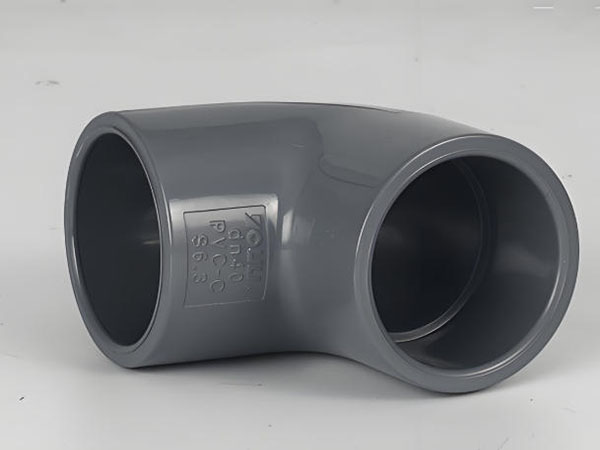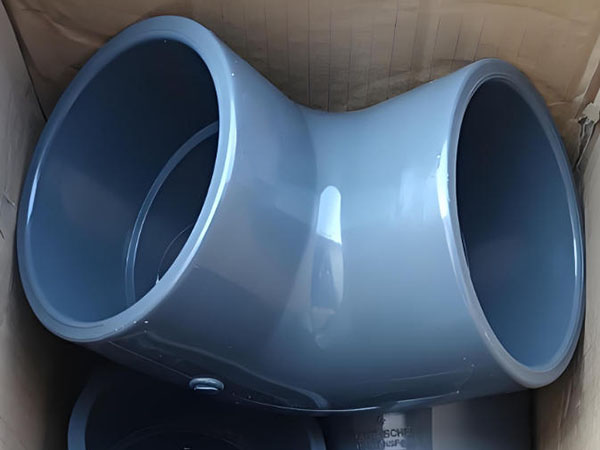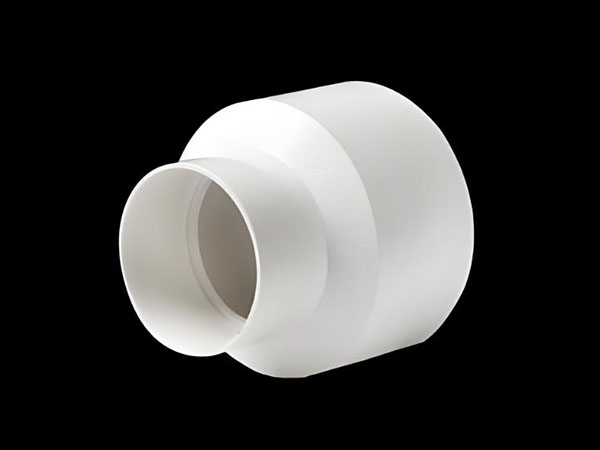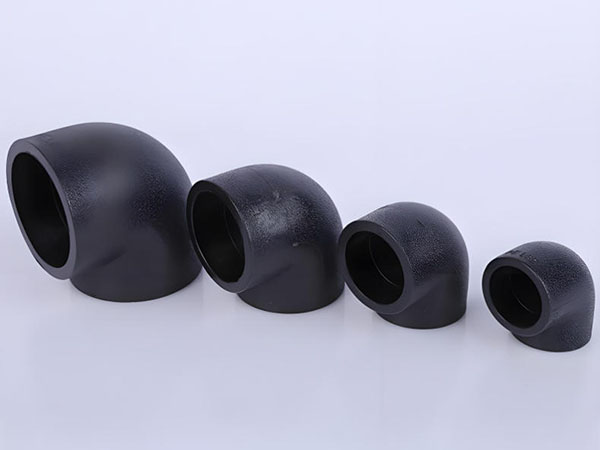In modern industrial, commercial, and residential construction, the reliability, safety, and durability of piping systems are paramount. Among various pipe materials, CPVC (chlorinated polyvinyl chloride) stands out for its superior performance. As an integral component of CPVC pipe systems, 2 inch CPVC fittings fulfill crucial tasks such as changing flow direction, diverting flow, reducing diameters, and connecting pipes. This article will provide a comprehensive explanation of 2-inch CPVC fittings.

What is CPVC? Why choose it?
Before delving deeper into pipe fittings, we must first understand the CPVC material. CPVC, short for chlorinated polyvinyl chloride, significantly enhances the heat resistance, corrosion resistance, and mechanical strength of ordinary PVC by chlorinating it.
The key advantages of choosing 2-inch CPVC fittings and pipes include:
Excellent heat and pressure resistance: This is CPVC’s most notable characteristic. Its maximum operating temperature reaches approximately 93°C (200°F), far exceeding the 60°C of ordinary PVC, making it an ideal choice for hot water distribution, fire sprinkler systems, and industrial fluid transport. The 2-inch gauge means greater flow and pressure, and CPVC can easily withstand the corresponding system pressures.
Excellent Corrosion Resistance: CPVC is highly resistant to a variety of chemicals, including acids, alkalis, and salts, and unlike metal pipes, it won’t rust or scale. This ensures pure water quality, avoids secondary contamination caused by pipe corrosion, and significantly extends the life of the system.
Lightweight, High-Strength, and Easy Installation: CPVC fittings are significantly lighter than metal fittings of the same specification (such as galvanized steel and copper), significantly reducing the labor involved in transportation and installation. Installation is primarily performed using solvent bonding, which is simple and quick, eliminating the need for specialized work like hot work or welding, improving efficiency and safety.
Smooth Interior, Low Flow Resistance: CPVC fittings have an exceptionally smooth interior, resulting in low flow resistance, effectively reducing pressure loss and ensuring flow. They also resist scale accumulation over long-term use, maintaining efficient system operation.
Economical and Long Life: Overall, the initial material cost and installation and maintenance costs of CPVC fittings are lower than those of metal piping systems. It has a designed service life of over 50 years, offering exceptional cost-effectiveness throughout its lifecycle.
Flame Retardancy: CPVC is self-extinguishing and offers excellent fire resistance, which is crucial for building safety, especially fire protection systems.

Common Types and Applications of 2-inch CPVC Fittings
A wide variety of 2-inch (usually referring to the IPS specification with an outer diameter of approximately 60.3mm) CPVC fittings are available to meet the needs of various piping layouts.
Major applications include:
Fire sprinkler systems: This is the most important application for 2-inch CPVC fittings. In automatic sprinkler systems in commercial buildings, hotels, hospitals, and warehouses, CPVC is a preferred alternative to galvanized steel pipe.
Industrial piping systems: Used to transport corrosive fluids such as industrial cooling water, chemicals, and process water.
Hot and cold water supply systems for commercial buildings: For example, centralized water supply networks in hotels and schools.
Pipe systems for swimming pools, spas, and other spa facilities.
Common types of 2-inch CPVC fittings include:
Elbows: Used to change the direction of a pipe. Common examples include 90° and 45° elbows.
Tees: Used to divert flow. They are divided into equal-diameter tees (three ends are the same size) and reducing tees (one end has a different size, such as 2x2x1.5 inches).
Straight fitting/sleeve: Used to connect two straight pipes of the same diameter.
Reducing fitting: Used to connect two pipes of different diameters to achieve a diameter change.
Flange adapter: Used to connect CPVC pipe to valves, pumps, or other equipment via a flange.
Pipe cap: Used to seal the end of a pipe.
Union: A fitting that can be easily disassembled, facilitating future system maintenance and repair.
Cross: Used for complex piping layouts that require flow diversion in four directions.

How to Properly Select and Install 2-inch CPVC Fittings
Purchasing Guide:
Confirm Standards and Certifications: Ensure fittings comply with relevant international or national standards, such as ASTM F441 (fitting standards) and UL Listing (fire protection system certification) in the United States, or GB/T standards in China. UL certification is crucial for fire protection systems.
Matching Pipe Specifications: Ensure the fitting specifications (such as SCH 40 or SCH 80) exactly match the CPVC pipe you are using. Do not mix pipes and fittings with different wall thicknesses.
Choose a Reputable Brand: Choose reputable brands to ensure material purity and manufacturing quality, and avoid products made from inferior recycled materials.
Installation Steps and Key Points:
Cutting and Trimming: Use a dedicated cutter or saw to cut the pipe perpendicularly, ensuring a smooth cut. Then, use a knife or file to remove burrs inside and outside the cut and gently chamfer the edges.
Cleaning and Marking: Use a dedicated CPVC cleaner to thoroughly clean the surface of the fitting socket and the pipe insertion end to remove oil and dust. Mark the insertion depth on the pipe.
Gluing: Apply CPVC solvent-based adhesive evenly and quickly to the inside and outside of the socket. Apply a full, even coat to avoid gaps or excessive thickness.
Connecting and Holding: Quickly insert the pipe into the socket to the depth mark. Then, gently rotate it a quarter turn to evenly distribute the glue. Hold the connection in place for approximately 15-30 seconds to prevent it from popping out.
Curing Time: After the connection is complete, allow sufficient curing time (typically 15 minutes to several hours, depending on ambient temperature and the adhesive’s instructions) before pressure testing.
Precautions:
Maintain adequate ventilation in the application area.
Avoid bonding on wet or frozen surfaces.
Strictly follow the adhesive manufacturer’s instructions and curing time.

Comparison of 2-inch cpvc fittings and metal pipe fittings
| Feature | 2″ CPVC Fittings | Galvanized Steel Fittings | Copper Fittings |
| Corrosion Resistance | Excellent, no rusting | Poor, prone to rust and scaling | Good, but may develop patina (verdigris) |
| Heat Resistance | Excellent (up to 93°C / 200°F) | Excellent | Superior (but more expensive) |
| Weight | Very light | Heavy | Relatively heavy |
| Installation Difficulty | Low, solvent cement bonding, quick | High, requires threading/welding | Medium, requires welding or press-fitting |
| Initial Cost | Low | Moderate | High |
| Maintenance Cost | Very low | High, requires regular anti-rust | Moderate |
| Applicable Systems | Fire protection, hot & cold water, industrial | Traditional fire protection, water supply | High-end building water supply, refrigeration |
2 inch CPVC fittings, with their outstanding heat and corrosion resistance, lightweight and easy installation, and exceptional cost-effectiveness, have become a star product for medium- and large-scale piping systems, particularly fire sprinkler systems and industrial piping. They represent the evolution of piping technology toward greater safety, durability, environmental friendliness, and cost-effectiveness. Whether for new construction or retrofitting existing systems, choosing high-quality, standard-compliant CPVC fittings, coupled with professional installation, will provide decades of reliable protection for your piping system.






















